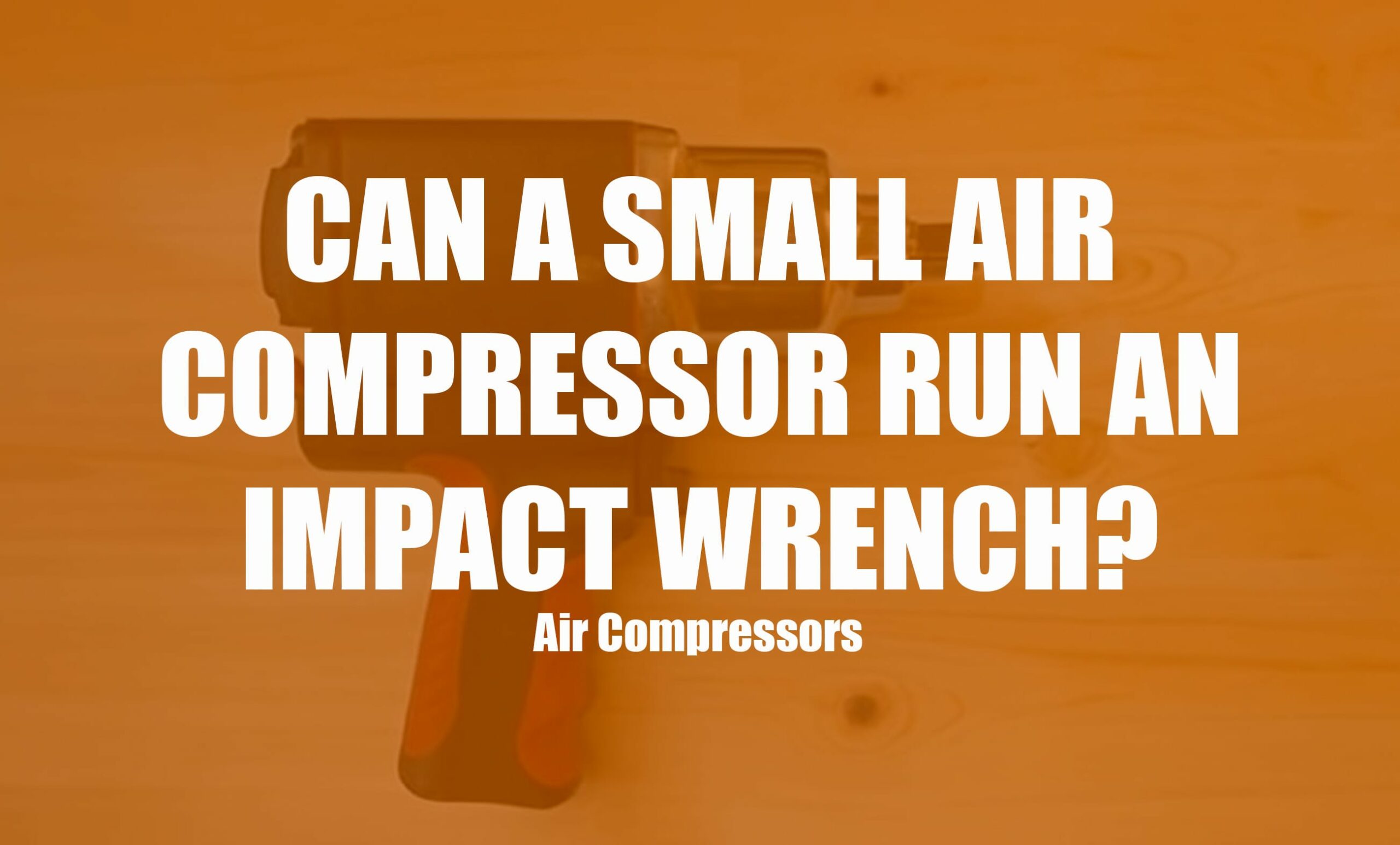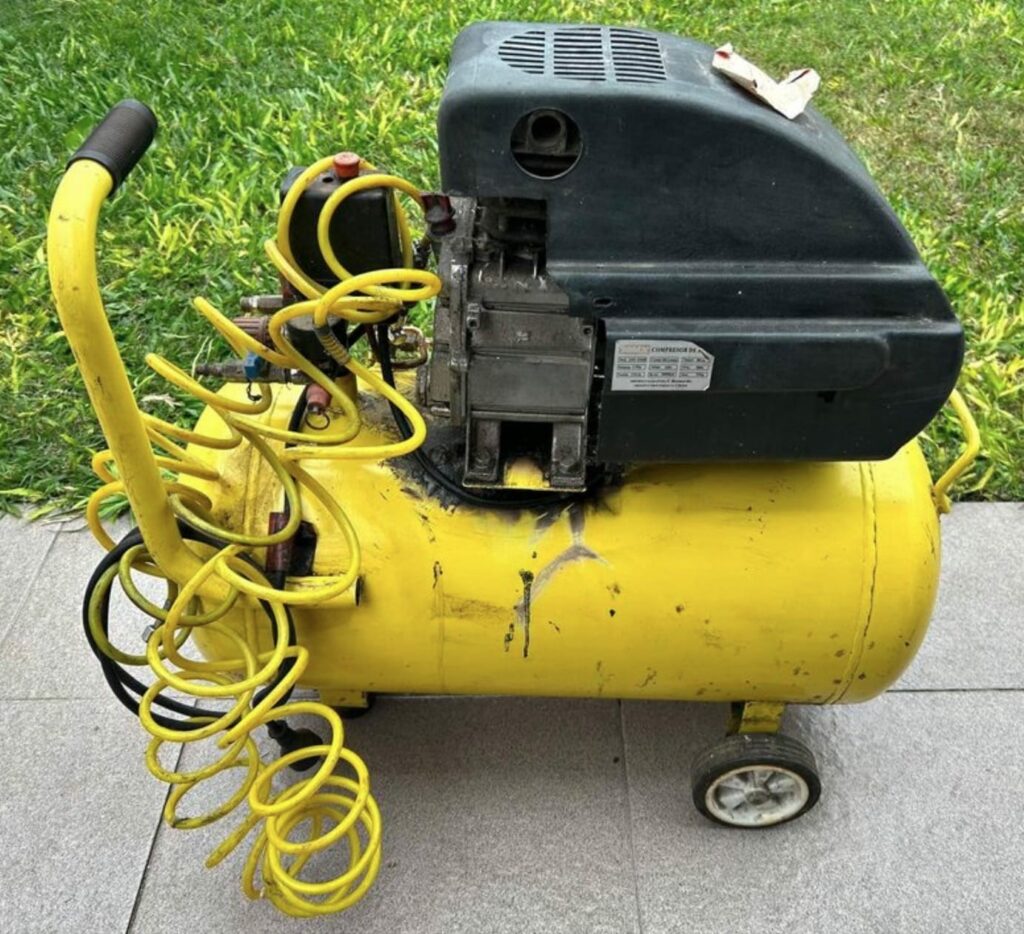This a question pops up very frequently among newbies and, surprisingly, finding a straight answer isn’t as easy as you’d think.
You see, the market is flooded with options.
Big air compressors, small ones, ones that look like they could launch a rocket, and others that wouldn’t look out of place in your grandma’s garage, and finding and answer to this question can be a bit tricky.
But don’t worry, we’re not about to leave you hanging.
Luckily, this article is going to help you answer that question and find a small air compressor that’s up to the task of running an impact wrench.
So, let’s get it started.
Understanding Air Compressors and Impact Wrenches
Let’s dive right into the world of air compressors and impact wrenches.
These two are like the dynamic duo of the power tool world, each playing a crucial role in getting those tough jobs done.
What is an air compressor?
Picture an air compressor like a lung. It takes a deep breath, pulling in air, and then compresses it down, storing it up for when it’s needed. When you hit the switch, it exhales that air out, powering your pneumatic tools with a strong, steady stream of air.
What is an impact wrench?
Now, let’s talk about the impact wrench.
This tool works by delivering powerful, rapid blows to fasteners so they are easily removed. It’s like having a heavyweight boxer in your corner, ready to deliver a knockout punch to those stubborn nuts and bolts that just won’t budge.
The secret to its power is in the name – impact. It uses a rotating mass to create a high-torque impact, which is then transferred to the output shaft and onto your stubborn bolt or nut which then it can be removed.
How do air compressors and air impact wrenches work together?
But here’s where things get interesting.
Both air impact wrenches and air compressors need to work in harmony for either of them to be effective.
The air compressor needs to provide the right amount of pressure and flow for the impact wrench to operate at its best. And the impact wrench needs to be designed to make the most of the air supply it gets.
It’s a delicate balance, but when it’s right, it can help you tackle jobs faster and with less effort, leaving you more time to enjoy the fruits of your labor.
Can a Small Air Compressor Run an Impact Wrench?

Yes, a small air compressor (say a 1HP air compressor) can definitely run an air impact wrench as it delivers enough air pressure for this job.
There are, however, certain considerations you should keep in mind before getting your hopes up.
Impact Wrench’s Air Pressure Needs
When you’re sizing up an air compressor for your impact wrench, one of the first things you need to look at is the CFM.
This is the amount of air that the compressor can deliver in a minute.
Now, the lowest CFM requirements a pneumatic impact wrench can have is around 3 to 6 CFM which can totally be delivered by small air compressor, say, one with a 1 HP motor.
But remember, it’s not just about meeting the minimum requirements. You want to give your impact wrench room to breathe, so it’s always a good idea to go a bit higher if you can.
Air Compressor Size
Next up, let’s talk about the size of the air compressor’s tank.
The bigger the air compressor is, the longer you can run before you have to stop and refill.
Now, a small air compressor with a tank size of around 6 to 20 gallons can run a pneumatic impact wrench.
But here’s the catch – the smaller the tank, the more often the compressor will have to cycle on and off to refill it, which can lead to more wear and tear on the compressor, and it can also mean waiting around for the pressure to build back up.
So, if you’re planning on using your impact wrench for extended periods, you might want to consider a larger tank.
Air Compressor’s Duty Cycle
Finally, let’s talk about the duty cycle which is a measure of how long the compressor can run before it needs a break.
It’s usually expressed as a percentage, like 50% or 100%.
A 50% duty cycle means the compressor can run for half the time, and then it needs to rest for the other half while 100% duty cycle means the compressor can run continuously.
Now, when you’re using an air compressor to run an impact wrench, you want a high duty cycle. This is because the impact wrench needs a constant supply of air to operate effectively.
If the compressor has to keep stopping to cool down, it can disrupt your work and potentially damage the compressor.
Now, with a small air compressor, you might be thinking, “How can it keep up?” Well, it’s all about balance. A small air compressor might not have the same power as a larger one, but if it has a high duty cycle, it can still keep your impact wrench running effectively.
So, I’d tell you to look for a compressor with a high duty cycle, preferably 100%, to keep your impact wrench running continuosly as its the best way to maximize productivity.
Choosing the Right Small Air Compressor for Your Air Impact Wrench
So, let’s now imagine you’re in the market for a small air compressor for your impact wrench.
But not just any compressor. You need one that’s going to step up to the plate and deliver when it counts.
Here’s what you should be looking for:
- High CFM: Your impact wrench needs air, and it needs a lot of it. That’s where CFM, or Cubic Feet per Minute, which depicts how much air your compressor can dish out in a minute. Meaning, you want a compressor with a high CFM, which is around 3 to 6 CFM in the case of a small air compressor.
- Large Tank Size: Even though you’re looking for a small air compressor, you’ll want one with a decent-sized tank. The bigger the tank, the longer your compressor can run before it needs a breather. I’d say a hotdog air compressor should be more than enough.
- High Duty Cycle: Duty cycle is all about endurance. It’s a measure of how long your compressor can run before it needs a time-out. A high duty cycle, preferably 100%, means your compressor can keep going and going, which is what I’d recommend
- Good PSI: PSI, or Pounds per Square Inch, is all about pressure. Your impact wrench needs power, and a good PSI delivers that. It’s like having a heavyweight champ in your corner, ready to deliver the knockout punch. That’s why I’d say getting a small air compressor that can deliver around 90 to 100 PSI should be more than enough for most impact wrenches
- Quality Construction: Finally, you want a compressor that’s built to last. Look for one that’s got a solid build and good reviews as this is the best way to know that you money is well spent
Frequently Asked Questions
How much air pressure does it take to run an impact wrench?
Different wrenches have different air pressure requirements.
But as a general rule of thumb, most impact wrenches need an air pressure of about 90 to 100 PSI to operate effectively. It’s like the sweet spot – not too high, not too low, just right
What size air compressor do I need to remove lug nuts?
A small air compressor with a tank size of around 6 to 20 gallons should deliver enough air pressure to run an air impact wrench that can remove lug nuts.
But remember, it’s not just about size.
You also want to look at the CFM and PSI. A good range to aim for is around 4 to 5 CFM and 90 to 100 PSI. It’s like having the right tools for the job – with these specs, you’ll be popping those lug nuts off in no time.

